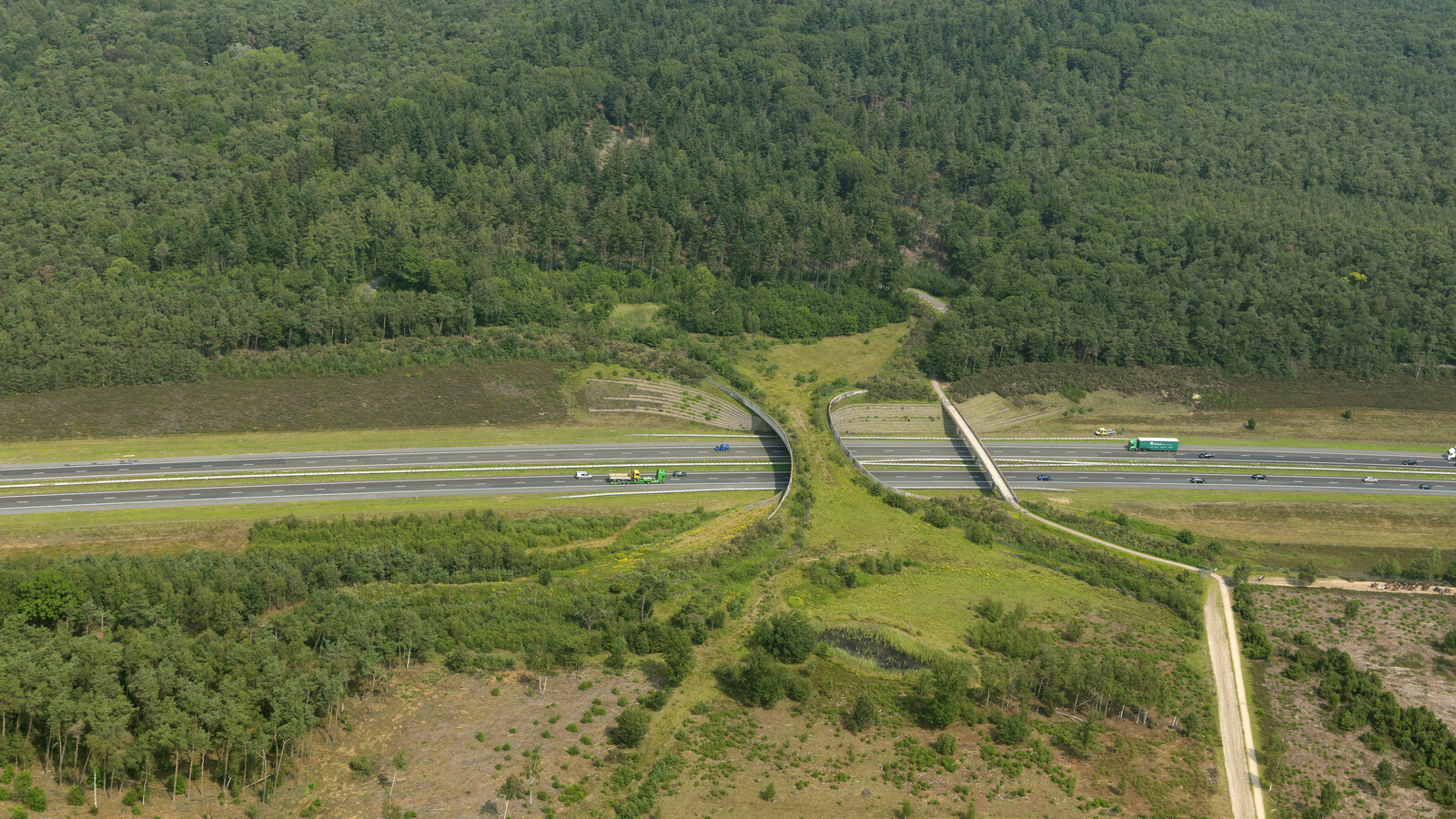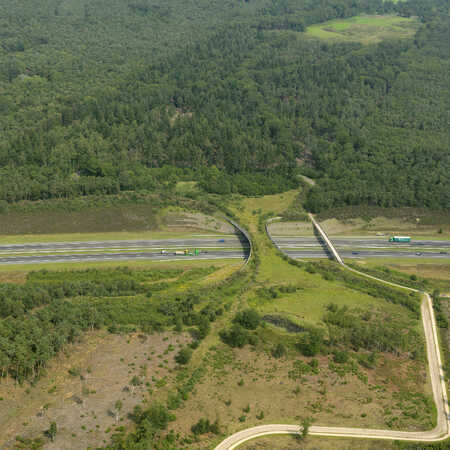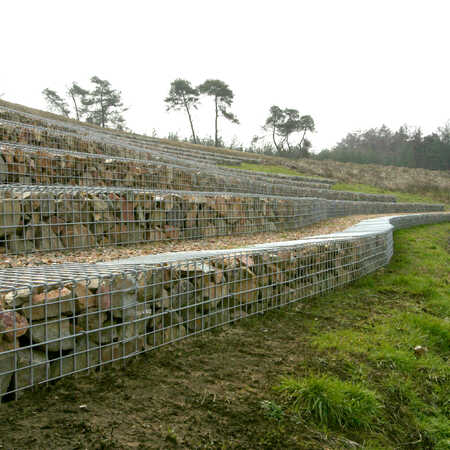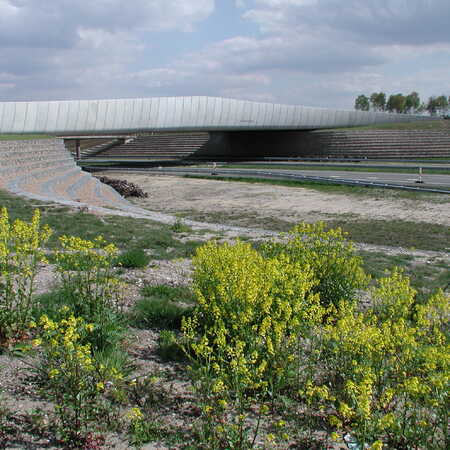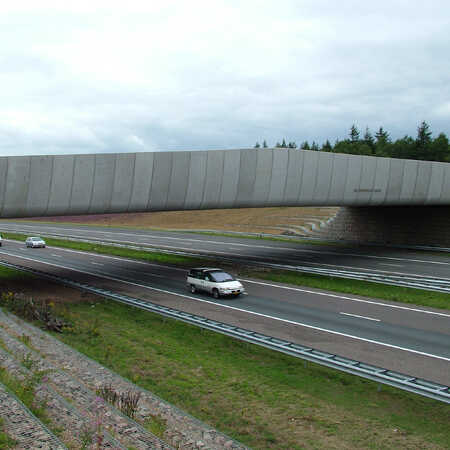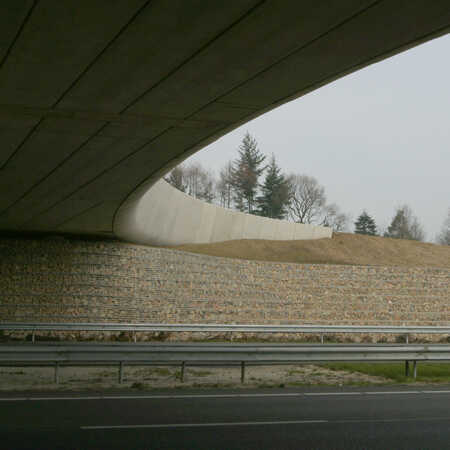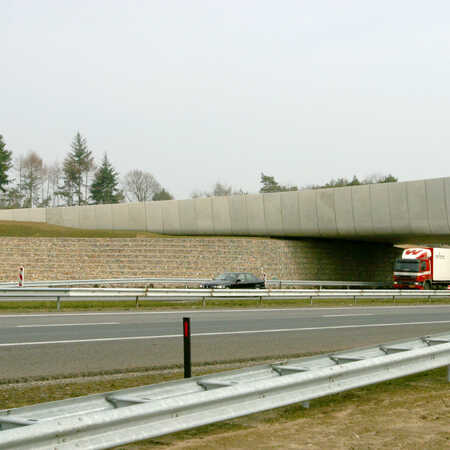Aannemingscombinatie Tricolor (Grontmij, Van Gelder, TBI en Haverkort)
0303
Gallery
Wildlife Crossing
Just south of the town of Rijssen, the busy A1 motorway cuts through a wooded area that was planted between the 1930s and 1950s. It is hilly wooded terrain, but one also finds heathlands with juniper bushes. The Dutch Road and Transport Authority commissioned a wildlife crossing in 2001, an infrastructural element called an ‘ecoduct’ in Dutch. The architectural studio ZJA designed this wildlife crossing named De Borkeld, situated in between the Groene Kruisbossen and the woods near Friezenberg.
Most people assume wildlife crossings are simply meant to allow deer and boars a safe passage across the motorway, so they can roam freely. Actually, these wildlife crossings were built in the 1990s as part of the National Ecological Network (Ecologische Hoofdstructuur, EHS), that was intended to strengthen biodiversity and genetic variation within the animal populations. A motorway separates groups of deer, hedgehogs, squirrels, boars, marten, and reptiles, and thereby increases the risk of inbreeding. A rich genetic mix reduces the risk of disease and makes a population more robust. Plants and insects that are part of the same biotopes also benefit from those natural bridges and can spread and thrive more easily.
Elegantly Merged into the Landscape
The design of the wildlife crossing at De Borkeld by ZJA aimed at an optimal merging of landscape and structure, for motorists as well as for animals. When approaching a structure like this at high speed it helps when it is simple, open and easily readable. That is the reason for the choice for a single span without support in the middle. Seen from the road the wildlife crossing consists of long and elegant lines. This effect is achieved by the wide edge that rises slightly in the middle, and by the sprawling, rounded landings. Recently the motorway has been extended with extra lanes, but still the area between the wildlife crossing and the road consists of terraces with diverse plant growth. Small animals can still move parallel to the road.
The crossing is designed to nudge animals to make a safe passage. Hence the high walls and the bushes to create a barrier on the east side where a bicycle bridge is built. The wide arches in the design slowly and softly narrow the open terrain into the actual bridge. Bushes growing against the concrete walls make sure the animals are disturbed as little as possible by the visual and acoustic disturbance of the surrounding traffic.
In the Dutch spirit of smart and minimal interventions, plants and animals are supported as they inhabit the manmade landscape. This requires a seamless merging of landscape and structure, and an optimal design of the perception of the motorists and that of the animals. This modest and elegant wildlife crossing is an example of exactly that optimum.
Award
Nomination: Dutch Conctrete Award 2005
Architect: ZJA
Client: The Dutch Road and Transport Authority
Year: 2004
Project: #303
Related
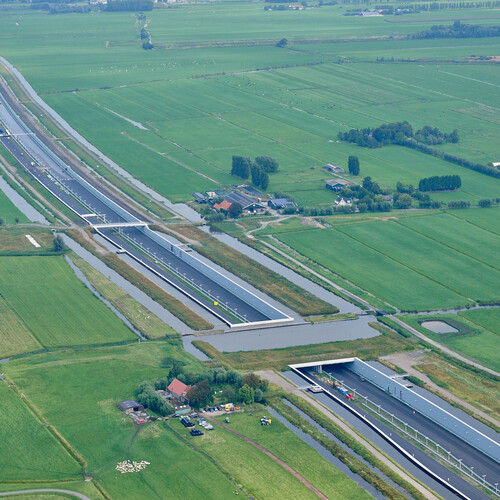
A4 Delft – Schiedam
First Honey Highway of Europe
The A4 Delft - Schiedam (A4DS) motorway, close to the city of Delft and Rotterdam, transects an area of outstanding natural beauty and a…
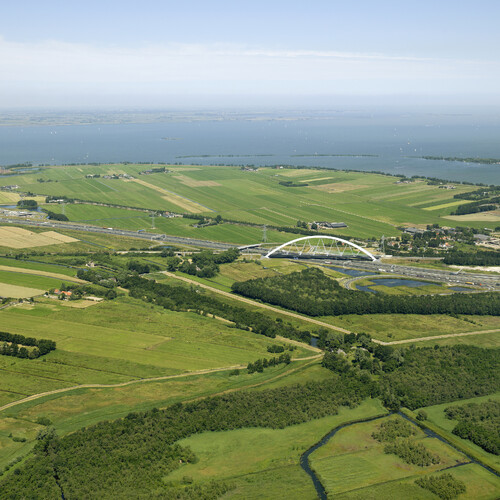
Road expansion A1/A6 Diemen – Almere Havendreef
Between Amsterdam and Almere
It seems an odd question: is it possible to drastically improve the infrastructure of the northern part of the Randstad, between Diemen and…
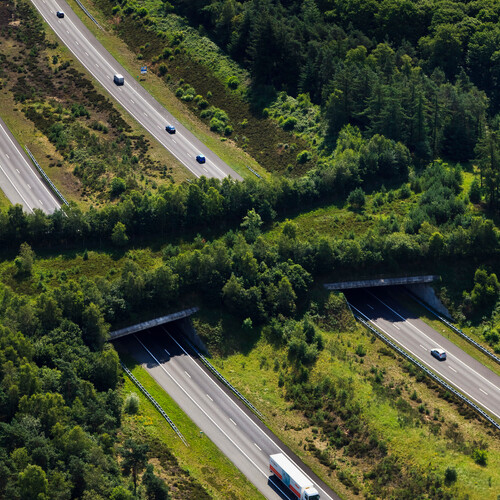
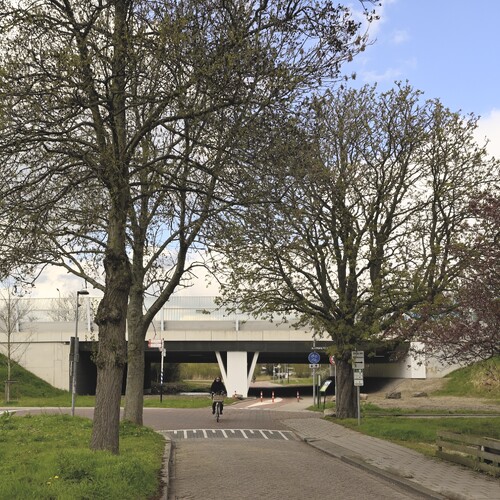
A20 viaduct, Schiedam
On short notice, an existing concrete viaduct in the Rotterdam ring road needed to be strengthened. To achieve this a steel reinforcement…
